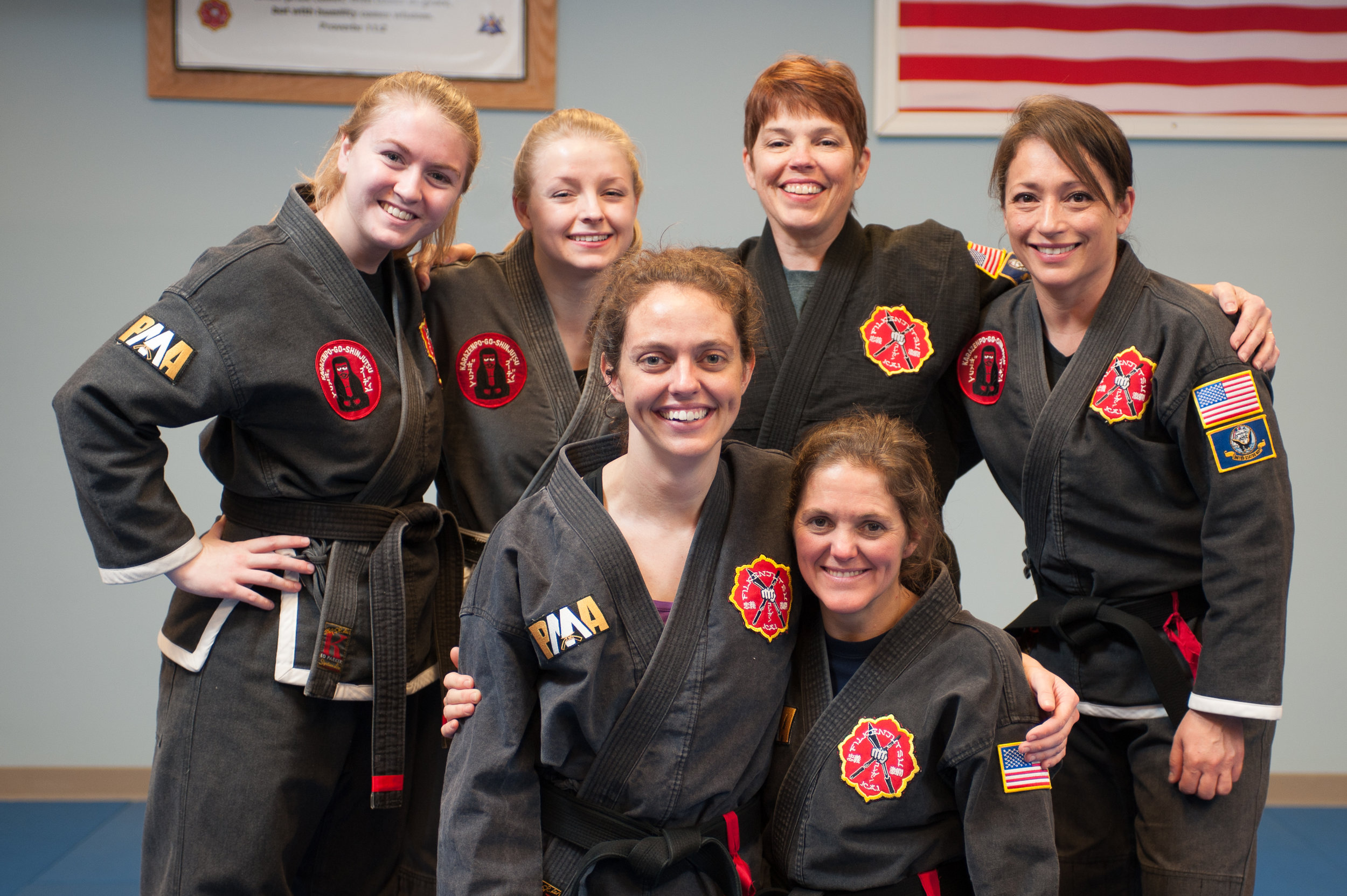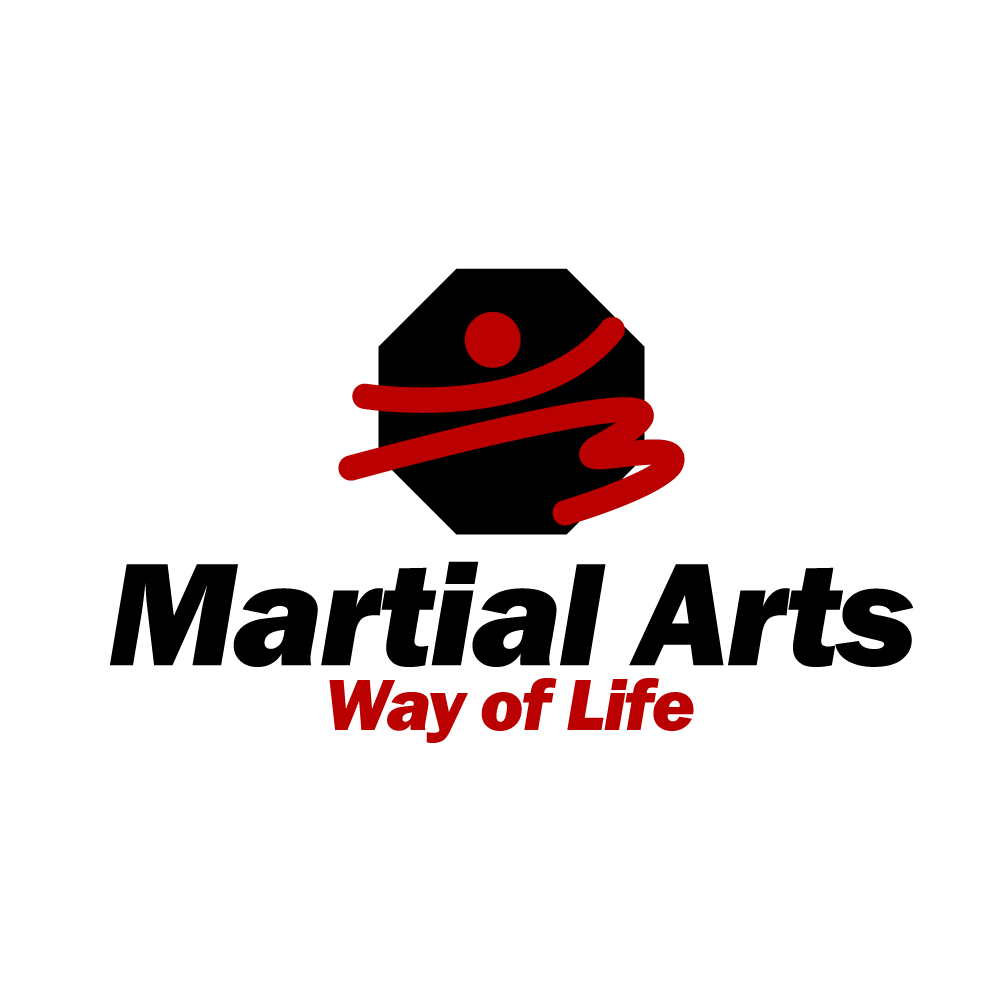*On September 13-15, 5 PMA students tested for and earned their Black Belts in FILKENJUTSU Kenpo. Follow along over the next few weeks, as we share some blog posts that were written by PMA’s newest Black Belts during their preparation for Black Belt. First up is Iain Willborn. Iain is our academy’s first person to begin training as a child (Iain started at 11), earn their Junior Black Belt, and then take the 3-day test to earn their full Black Belt upon turning 18. Hopefully the first of many! Enjoy!
One may observe the phrase “martial arts is a way of life” and think “No, martial arts is nothing more than a hobby, through and through,” and to be honest, when I was younger, I would have fallen into the group of doubters.
Can you find Iain in this 2013 photo? He is the 5th from the right in the back row!
I was one of the people that do not see martial arts for anything more than basic self-defense and exercise. But when you look deeper, martial arts, in my case, FILKENJUTSU, has a plethora of knowledge and lessons hiding just under the surface. Respect for authority is just one. The humbling experience you receive on a class to class basis through the teachers and the curriculum is another. As you are told often, “a martial artist’s journey is never done,” and indeed there is always more to learn, whether physically or mentally. The self-control, the ability to be a gracious winner and an even better loser, and then the true feeling of comradery between one another are just snippets of what martial arts, especially taught through PMA, have opened my mind to over the years.
I never wanted to train in martial arts in the first place. I was lovingly forced into it by my parents, who hoped it would not only give me some well-needed exercise, but also aid in my anger management issues. And I thank God that they did because it’s been one of the primary means that He has used in my life to this day.
As a lazy, angry child, I saw absolutely nothing good about PMA, other than it was something cool to tell friends about. But looking back at that little boy now, I can see that PMA is exactly what I needed, and exactly what God wanted for me. The investment that my parents made in classes for me over the years has been priceless in my life. My journey through Progressive Martial Arts has ranged years, and I’ve had many different attitudes towards it during that period. I’ve gone from not wanting to do it, to only doing it for fun, to doing it for fitness. But all these have been leading me to where I have landed and settled over this past year, wanting to do martial arts for life, wanting to learn more, and continuing to improve my skills.
August 2015 - PMA's first group of Junior Black Belts!
For almost the entirety of my martial arts life thus far, I have been more of a punch and kick oriented fighter. My newest passion, however, is the entirely different fight that happens on the ground, Brazilian Jiu Jitsu.
When I first started martial arts, I did private classes in which I learned some basic Jiu Jitsu. As I continued to train, however, I eventually started doing group classes in the juniors, then to young adults, then finally to where I am today, the adult Kempo class. In the juniors and young adults, Jiu Jitsu was taught very minimally. So, for years I was in a stagnant state concerning groundwork. I knew the basic positions, and basic movements, but I never practiced them, and I never thought of them very much honestly. But just within the little time that I’ve been training Jiu Jitsu seriously, about a month and a half, I’ve learned just how wrong my outlook was.
My mentality concerning my lack of Jiu Jitsu training through the years was as simple as “I won’t ever let someone take me down, so I don’t need to know Jiu Jitsu,” which is crazy! One must observe that I drastically overestimated one thing, and that was my skill as a fighter. Over the two years that I have been in the adult’s class, my lack of skill in controlling a fight has been demonstrated to me time and time again, and that is just in a civil sparring match! I now realize that I will never be quick enough, or smart enough to guarantee that I won’t be taken to the ground during an altercation. Like SiFu David regularly reminds us, “Action is faster than reaction”. So, moving forward now, what is my goal for Jiu Jitsu?
My goal for Jiu Jitsu, as is my goal for any aspect of a fight, is to learn how to survive. I simply seek to gain the ability to last through the fight, whether on my feet or on the ground. But another more exact point of interest for me is submissions. The art of controlling your opponent, whether to injure or to simply stop them from injuring you has fascinated me. As a person that trained for years thinking about fast, powerful, and rigid strikes to control an opponent, seeing the fluid art of chokes, key locks, and triangle chokes (just to name a few) has opened my eyes to a side of the fight game and martial arts that has been out of my reach for years. I am looking forward to learning and honing these skills moving forward in my martial arts life, and becoming a more well-rounded martial artist.
August 2015 - Iain’s Junior Black Belt Test with his classmates and instructors.
The anger that plagued my younger years is still a fault I continue to battle even now, but it is not the destructive hellfire as before. It is now in the form of constructive discontent. Instead of firing my failures, insecurities, and sadness out at the poor souls around me, or destroying myself mentally, I use it to fuel my desire to always be improving, always learning, and always helping others. My hope and dream moving forward is to be a part of the family at PMA, and to be there to support and uplift others as they are embarking on their own journeys.
December 2016 - Iain tested for his first degree on his Junior Black Belt, alongside Monty Blalock and Matt Thomas. At PMA, when a child reaches Brown Belt but is not old enough to take the Black Belt test yet, we test them for a “Junior Black Belt,” which is the belt you see in this photo with the white stripe. Then, they can earn degrees (the red stripes) on their Junior Black Belt, until they turn 18 and are selected to take the test for their full Black Belt.
I will move forward in the race that is this life to learn how to handle myself with honor and dignity, so that one day, I can master the avoidance of battle and strive for peace. The work ethic that I have learned from my parents, my church, and PMA has enriched every aspect of my life. Those three things have sculpted who I am, and who I’m striving to be. PMA is one of the building blocks that is there to support the growth of who I am, and I will continue to build on those foundations for the rest of my life.
Iain amongst his FILKENJUTSU Black Belt family!
I couldn’t be more thankful for the people that have aided me along this journey, especially in the early years, like SiFu David and SiHing Terry. They have been there to lift me up, but also correct me when I was wrong. Their commitment to me, and my fellow students, has left an unperishable imprint on who I am and how I carry myself today. I’m never going to stop pursuing my callings and aspirations, even when faced with failure and hardship.
“To fall seven, to rise eight. Life begins now.”





























